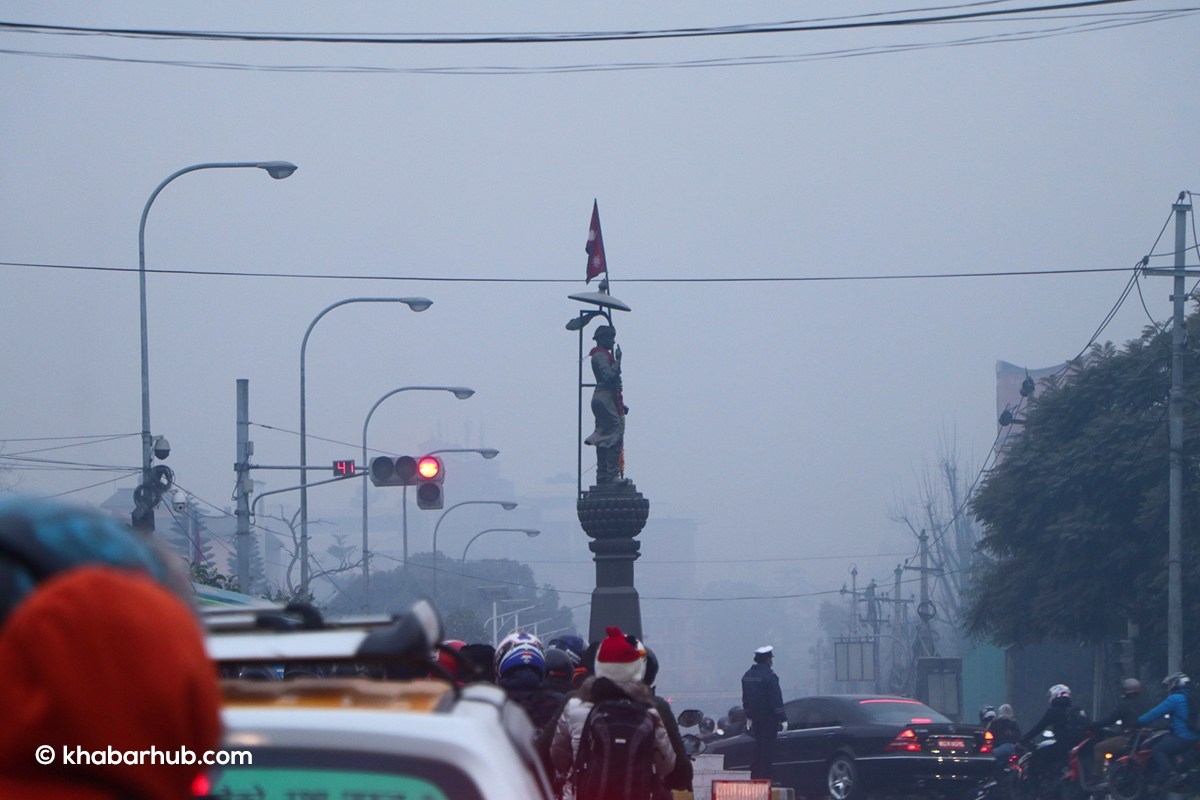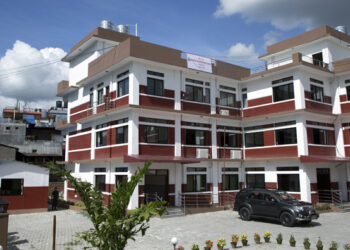KATHMANDU: Incidents of forest fires across Nepal have escalated air pollution levels in major cities like Kathmandu and Pokhara.
This afternoon, Kathmandu was listed as the third most polluted city globally, with an Air Quality Index (AQI) recording of 165.
Measurements indicated AQI levels of 158 in Khumaltar, 175 near the Bhaktapur Cancer Hospital, and 120 in the Ratnapark area, raising significant concerns for public health.
Environmental activist Rajan Thapa highlighted that an AQI exceeding 100 poses severe risks to human health.
Typically, Nepal witnesses around 2,500 wildfires annually, with 80 percent occurring between late February and late May. The period from mid-March to mid-May is particularly critical, accounting for 60 percent of reported forest fires.
Contributors to air pollution include vehicle emissions, road dust, industrial emissions, poor waste management, and forest fires. Urgent systematic measures are needed to address these issues, Thapa emphasized, advocating for environmentally friendly transportation options.
Meteorologist Barun Paudel cautioned of dry conditions persisting in the upcoming week, posing challenges in wildfire containment. A potential heatwave could exacerbate dryness, escalating the wildfire risk.
Wildfire expert Sundar Sharma underscored the detrimental impact of forest fires on air quality, citing reports from NASA of 130 forest fire locations across Nepal on Monday. Sharma emphasized the urgency of forest fire control measures to combat air pollution.
Forest and Environment Ministry Spokesperson Badri Raj Dhungana attributed the rise in pollution to insufficient state investment, lack of awareness, and coordination among stakeholders. Dhungana stressed the need for increased publicity campaigns to control forest fires.
Chest specialist Dr. Niraj Bam warned of the short-term and long-term health risks posed by air pollution, including respiratory diseases, asthma, and cardiovascular issues. Bam advised precautions such as staying indoors during peak pollution hours, wearing masks when necessary, and avoiding early morning outdoor activities.
Management Action Plan for Kathmandu Valley states that an AQI exceeding 300 is considered a disaster, recommending measures like refraining from burning garbage and enhancing street cleaning efforts.
The National Environment Policy outlines the preparation and implementation of national standards to reduce pollution, including measures to map air, water, and sound quality in polluted areas.
Environment-friendly technologies will be implemented to manage emissions from industries, aligning with the policy’s objectives to combat pollution effectively.
RSS









Comment